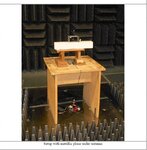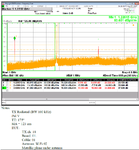BMR
Member level 5
Hello all,
I'm dealing with low power module at 2.4 GHz. The design is based on Ti's cc2538+cc2592. In conductive testing all the harmonics seems to be attenuated very well. But in radiated testing with an antenna, there seems to be high levels of fc/2 and 3fc/2 ( 1.2 GHz and 3.6 GHz ). The antenna used is a commercial rubber ducky antenna. The antenna is connected to a coax cable and the cable to module via pigtail connector. The module is programmed to transmit at +21 dBm. If I change a different ducky antenna, fc/2 is still present but the levels are well below the FCC limit. The customer doesn't want to change the ducky antenna because of the budget.
so, has anybody dealt with fc/2 and 3 fc/2 harmonics? Any suggestion on how to set traps for fc/2?
Thanks!
I'm dealing with low power module at 2.4 GHz. The design is based on Ti's cc2538+cc2592. In conductive testing all the harmonics seems to be attenuated very well. But in radiated testing with an antenna, there seems to be high levels of fc/2 and 3fc/2 ( 1.2 GHz and 3.6 GHz ). The antenna used is a commercial rubber ducky antenna. The antenna is connected to a coax cable and the cable to module via pigtail connector. The module is programmed to transmit at +21 dBm. If I change a different ducky antenna, fc/2 is still present but the levels are well below the FCC limit. The customer doesn't want to change the ducky antenna because of the budget.
so, has anybody dealt with fc/2 and 3 fc/2 harmonics? Any suggestion on how to set traps for fc/2?
Thanks!



